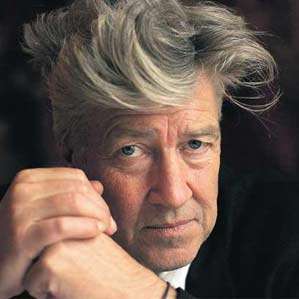
In this interview with Dr. Fred Travis, we pick the brain of the famous neuroscientist over what is really going on in people’s heads as they make sense of their memories, opt for less or more snooze time, and enjoy the benefits of their Transcendental Meditation practice.
*
TMHOME: When we create our self-image or evaluate our life, we rely heavily on our memories of past events. But how do we really know what has really happened? Some studies seem to suggest that human memory is not really that reliable?
DR. FRED TRAVIS: Memories are stored in the brain as a distributed network. ‘Re-member’ actually means putting back together. We put back together the information that was somehow stored in the activity of the brain plus everything that’s happened afterwards.
One study which looked at this quite elegantly had people watch a movie of a car running into a bus. After the movie, the subjects took a test on what did or did not happen. One of the two randomly assigned groups got the question ‘Did the car hit the bus?’ and the other one, ‘Did the car smash into the bus?’ That one word was the only difference between the tests the two groups were given.
Two months later they took another test and there was a new question: ‘Was there broken glass in the movie?’ 80% of people who had had the question ‘Did the car smash into the bus?’ two months earlier replied ‘Yes.’ Only 10-20% of the people who had had the question ’Did the car hit the bus?’ gave the same answer.
So, what we are finding is that we are very bad at remembering what actually happened – the brain is not a camera! It takes the information and constantly modifies it over time.
 In the same way, you can watch a movie and not remember afterwards that some piece of information came from that movie. Advertisers know this very well! They can come up with something that is silly and erroneous, but if you hear it enough times you begin to think it’s true. This is done in political campaigns all the time.
In the same way, you can watch a movie and not remember afterwards that some piece of information came from that movie. Advertisers know this very well! They can come up with something that is silly and erroneous, but if you hear it enough times you begin to think it’s true. This is done in political campaigns all the time.
The positive side of this is that if you add the experience of transcending with the practice of Transcendental Meditation twice a day, you’re changing your memories.
There was a doctoral dissertation done at Maharishi University of Management by Henry Ahlström using a Scandinavian measure called Self-Directed Search, in which you discuss the events in your life that have significantly changed its course.
His dissertation compared the results of Self-Directed Search for non-meditators, meditators, and people who practice the TM-Sidhi technique. The events that the non-meditators talked about were all negative. Practitioners of TM mentioned some negative and some positive events. TM-Sidhi practitioners, however, mentioned only positive events.
So, by practicing transcending you are actually transforming how you see the world, how you view the past, and you can find positivity in everything that has happened.
In your book Your Brain is a River, Not a Rock, you talk about the importance of sleep for optimal brain functioning. How easy or difficult do you think it is for the society to accept that sometimes more rest provides better results, considering how much American culture glorifies hard work and effort?
DR. FRED TRAVIS: The US is very energetic and dynamic – this is what is so positive about the country. However, the dynamism always needs to be tied to its source. When you sleep, you actually flush out the brain. The neurons are in a matrix called astrocytes, which help neurons function. During sleep the astrocytes constrict, allowing the cerebral spinal fluid to more easily percolate through the brain. Also during sleep, you replenish energy molecules needed for the brain to function properly, and you consolidate memories from the day.

The tired brain cannot work or learn. The tired brain cannot deal with stress and is not good at problem solving. So, the whole idea of rewarding working all-nighters should be turned the other way around.
Luckily, this realization of the importance of rest is seen now in the medical field. Medical residents used to have 36-hour shifts. However, research showed that then your brain functions on the level of being legally drunk in terms of vigilance. You can respond in a stereotypical way, but you’ll miss what is different. Thanks to studies that demonstrated this, residents are no longer being asked to do these long shifts.
So I think that this is change in the US culture. There is a growing awareness that rest is the basis of activity; dynamism needs to be rooted in silence. It is by moving back and forth between dynamism and silence that you optimize your success.
You also write about the processes in the brain involving the thalamus that most likely underlie the experience of transcending. You point out that the thalamus has two different types of cells – core cells and matrix cells. The core cells are grouped together in the thalamus and receive sensory input that leads to the content of experience. The matrix cells are spread throughout the thalamus and receive arousal input that leads to different levels of wakefulness.
In terms of these two parallel circuits, Transcendental Meditation brings about a state where matrix reverberations continue while core reverberations are silent. This is how we get to experience restful alertness.
Can you talk a bit more about the scientific findings which support this approach?

DR. FRED TRAVIS: The circuits are based on solid neuroscience research with both animals and humans. This research has used neural dyes to define the different cells. If you put a dye in the visual or auditory circuits, the dye collects in constrained groups of nuclei in the thalamus. These are the core nuclei and are responsible for the content of consciousness.
If you put a dye in the wakefulness circuits in the brain stem, the dye is seen diffusely over the whole thalamus. These are the matrix nuclei and are responsible for levels of wakefulness. These two circuits work in parallel: one brings in content and the other brings in wakefulness. Both need to work together for us to see the world. We have to be awake, and we need specific content. This is very well rooted into science.
So, the question is what happens during TM practice in relation to these two parallel circuits. TM practice appears to decrease the activation in the content (core) circuits while it enhances activation in the wakefulness (matrix) circuits. One support of this suggestion is that alpha1 (8-10Hz) EEG waves are seen during TM practice. The alpha wave is known to be generated by the oscillation between the thalamus and the cortex itself.
So, the underlying wakefulness is something that is there all the time, but we are just not aware of it because we identify with the changing content?
DR. FRED TRAVIS: That is true. Before you become aware of any object or idea, there is a burst of alpha1 activity that we see during TM. It’s called pre-stimulus alpha. This alpha1 burst wakes up the brain. It as if tells the brain that something important is coming. This pre-stimulus alpha burst is followed by the burst of sensory information. So, wakefulness and content are an integral part of our daily experience. Because they are so intimately connected, the content and wakefulness, we tend to think of them as one. The whole process of transcending is a means to effortlessly disentangle them: the content can become less and less while the wakefulness is amplified.
*
Click here for part I of the interview, where we studied the impact of TM on Dr. Travis 🙂



















